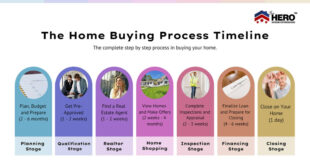Low Income Loan Programs: Guide to Financial Assistance. Navigating financial challenges can be overwhelming, especially for individuals with low incomes. Thankfully, low income loan programs exist to provide essential support. This article explores various loan options, eligibility criteria, and application processes to help you make informed decisions.
Understanding Low Income Loan Programs
Low income loan programs are designed to offer financial relief to individuals who may not qualify for traditional loans. These programs often feature lower interest rates, flexible terms, and reduced eligibility requirements.
Types of Low Income Loan Programs
1. Government-Backed Loans
Government-backed loans, such as FHA loans and USDA loans, provide accessible financing options for low-income borrowers. They are ideal for purchasing homes or funding essential needs.
2. Personal Loans for Low-Income Borrowers
Many lenders offer personal loans tailored to low-income individuals. These loans often require minimal credit scores and offer manageable repayment plans.
3. Credit Union Loans
Credit unions are non-profit institutions that prioritize members’ needs. They offer low-interest loans to qualifying low-income individuals.
4. Payday Alternative Loans (PALs)
Available through select credit unions, PALs offer short-term financial solutions with lower interest rates than traditional payday loans.
5. Non-Profit Organization Loans
Non-profit organizations provide loans or grants for low-income individuals to cover expenses like education, healthcare, or housing.
6. Microloans
Microloans are small, low-interest loans aimed at helping individuals or small businesses. They are particularly beneficial for entrepreneurs with limited capital.
Benefits of Low Income Loan Programs
- Accessibility: Simplified application processes and reduced eligibility requirements.
- Lower Interest Rates: Affordable repayment terms reduce financial strain.
- Flexible Uses: Suitable for various needs, including emergencies, education, and housing.
- Credit Building: Timely repayments can improve your credit score.
How to Qualify for Low Income Loan Programs
1. Assess Your Income
Determine if your income meets the program’s eligibility requirements. Most programs target individuals below a specific income threshold.
2. Check Credit Requirements
Some programs accept low credit scores, but others may require a minimum score. Explore options that match your credit profile.
3. Gather Documentation
Prepare documents such as proof of income, identification, and financial statements to streamline your application.
4. Meet Residency or Employment Criteria
Some programs require proof of U.S. residency or stable employment.
How to Apply for Low Income Loan Programs
1. Research Programs
Identify programs that align with your needs and eligibility. Use online resources or consult local financial advisors.
2. Complete the Application
Fill out application forms accurately. Attach required documentation to avoid delays.
3. Await Approval
Loan approval times vary. Ensure all information is correct to expedite the process.
4. Receive Funds
Once approved, funds are disbursed directly to your account or used for designated purposes, such as paying bills or tuition.
Tips for Managing Low Income Loans
- Create a budget to track expenses.
- Prioritize timely payments to avoid penalties.
- Explore refinancing options if interest rates drop.
- Avoid unnecessary borrowing to minimize debt.
- Seek financial counseling for guidance.
- Use automated payments to ensure timely repayments.
- Build an emergency fund to reduce dependency on loans.
- Compare interest rates before applying.
- Negotiate repayment terms if needed.
- Monitor your credit score regularly.
FAQs About Low Income Loan Programs
1. What is the primary purpose of low income loan programs?
These programs aim to provide affordable financial assistance to individuals with limited income.
2. Can I qualify with a low credit score?
Yes, many programs accept applicants with low credit scores.
3. Are these loans only for emergencies?
No, they can also be used for education, housing, and other essential needs.
4. Do I need collateral to secure a loan?
Most low income loan programs are unsecured, requiring no collateral.
5. How long does approval take?
Approval times vary by program but typically range from a few days to weeks.
6. Are interest rates fixed or variable?
Interest rates depend on the program but are generally fixed.
7. Can these loans improve my credit score?
Timely repayments can positively impact your credit score.
8. Are there application fees?
Some programs may charge minimal fees, while others are free.
9. Where can I find reliable programs?
Consult government websites, credit unions, and non-profit organizations.
10. What happens if I default on a loan?
Defaulting can lead to penalties and affect your credit score. Always discuss repayment challenges with your lender.
Conclusion
Low income loan programs provide a lifeline for individuals facing financial challenges. By offering accessible, affordable, and flexible options, these programs help bridge the gap between financial need and opportunity. Whether you’re seeking funds for housing, education, or emergencies, understanding your options and managing your loans responsibly is key to achieving financial stability. Explore these programs today to secure a brighter financial future.
 mortgage.kbk.news
mortgage.kbk.news
